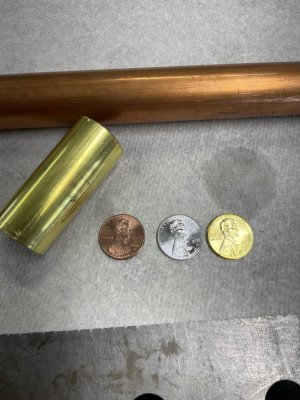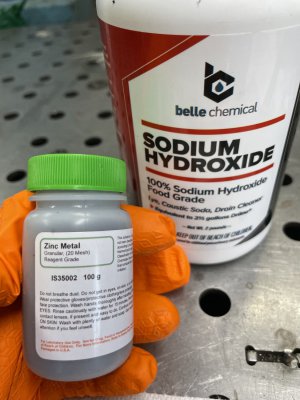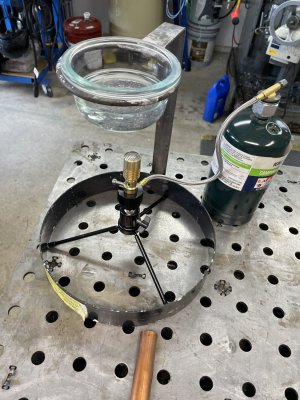- Joined
- Mar 26, 2018
- Messages
- 8,407
You’ve probably seen the High School chemistry experiment where they turn pennies to gold? (Well brass coated anyway)
I thought I’d give it a shot. It’s really easy.
After I coated the copper pipe I realized there may be more possibilities here.
Copper with a zinc coating?
Anything copper can be coated with zinc and therefore heated to a brass color.
Edit. If you decide to try this, the boiling sodium hydroxide fumes are nasty. Plenty of ventilation and use a respirator that can handle organic vapors and acid gasses. P100+
I thought I’d give it a shot. It’s really easy.
After I coated the copper pipe I realized there may be more possibilities here.
Copper with a zinc coating?
Anything copper can be coated with zinc and therefore heated to a brass color.
Edit. If you decide to try this, the boiling sodium hydroxide fumes are nasty. Plenty of ventilation and use a respirator that can handle organic vapors and acid gasses. P100+





